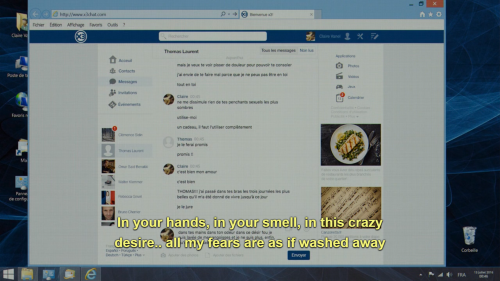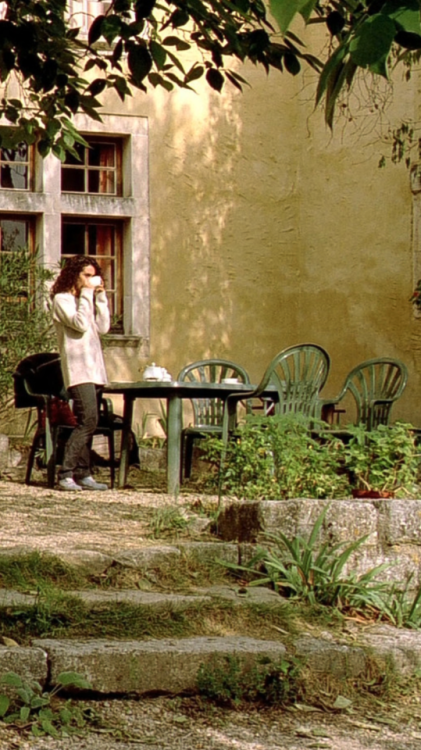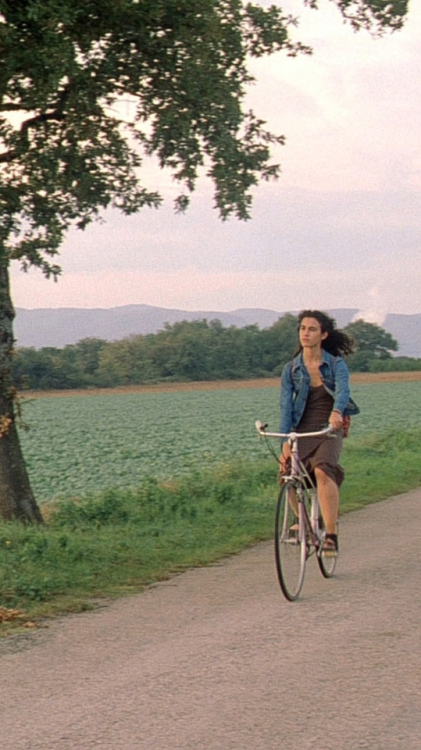#french films




bande à part, 1964
jean-luc godard


bande à part, 1964
jean-luc godard







les yeux sans visage, 1960
georges franju


les yeux sans visage, 1960
georges franju




code inconnu, 2000
michael haneke

code inconnu, 2000
michael haneke


code inconnu, 2000
michael haneke

code inconnu, 2000
michael haneke


code inconnu, 2000
michael haneke
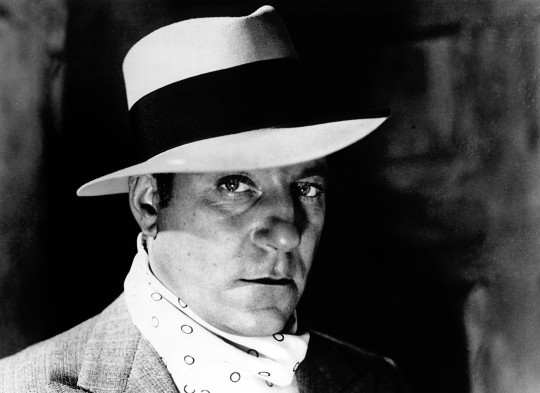
Julian Duvivier’s PÉPÉ LE MOKO is one of the most influential films of the 20th century. Not only is the 1937 French romantic crime drama starring the legendary Jean Gabin, a precursor of the Hollywood film noir, the classic inspired such filmmakers as Michael Curtiz (Casablanca, ‘42), Carol Reed (The Third Man, ‘49) and even Jean-Pierre Melville (Bob le Flambeur, ‘56). PÉPÉ was such an international hit, producer Walter Wanger quickly released a near shot-by-shot remake in 1938, Algiers, directed by John Cromwell and starring Charles Boyer as Pepe and Hedy Lamarr in her first American role. That film earned four Oscar nominations, including Best Actor for Boyer and Best Supporting Actor for Gene Lockhart.
And lest we forget, the original and the remake also influenced animator Chuck Jones’ now pariah of a character, Pepe Le Pew, and a dreadful musical version Casbah (’48) with Tony Martin and Yvonne De Carlo.
PÉPÉ is also a prime example of the poetic realism style of French filmmaking popular in the late 1930s. Besides Duvivier, other directors known for this lyrical style include Jean Vigo, Marcel Carne and Jean Renoir. The male anti-hero characters who populated these films were doomed from the outset; they lived on the outskirts of society, as in Renoir’s The LowerDepths (’36); were members of the working class; or were criminals, as in the case of Pepe. These characters tragically think when they fall in love, they will break out of their cursed existence. But women cause their emotional downfall, and romance usually ends in the death of the character.
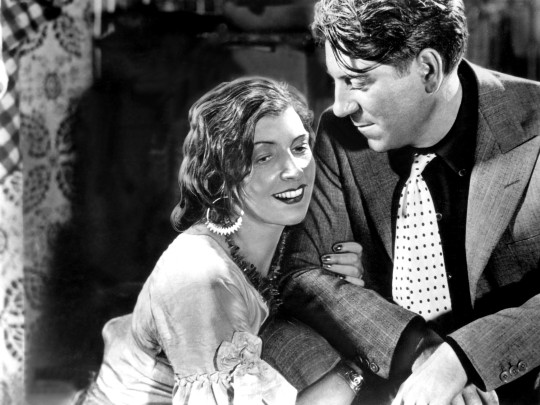
Pépé is a powerful, charismatic master thief who is respected and feared in the Algerian district known as the Casbah. He rules over the crooked, mazelike area where he plans his latest heists. But he is also trapped there. He dreams of returning to Paris but knows that will never happen. The police are in wait at the edge of the city if he dares try to escape. Also lurking around him is the sleazy and manipulative Inspector Slimane (Lucas Gridoux). As soon as he meets a beautiful Parisienne woman Gaby (Mireille Balin), the mistress of a much older wealthy Frenchman, you know Pépé is doomed.
PÉPÉ LE MOKO wouldn’t have been the enduring masterpiece it is without Gabin, the Everyman superstar of French cinema. Film noir superstars from Humphrey Bogart to Dana Andrews to Robert Ryan owe a lot of their anti-hero personae to Gabin. The legendary film critic Andre Bazin once described him as “the tragic hero of contemporary cinema.”
He was also one of the best dressed – no rumbled fedoras or ill-fitting suits. Just check out those well-tailored suits, snappy shoes and ties Pépé wears. In his 2002 New York Times critical essay on the film, critic Elvis Mitchell wrote Gabin’s “expressive and sorrowful pudding of a face immediately gave a picture a soul. Gabin was the tropical opposite to the waxy screen idols whose sleek good looks often suggested the hood ornament of a Hispano-Suiza.” And in the case of PÉPÉ, “Gabin’s wary cool is the heart of this movie.”

Because Wanger didn’t want any competition with his remake, PÉPÉ LE MOKO wasn’t shown in the U.S until 1941. The New York Times’ Bosley Crowther described the film as an “incomparable advantage over the Hollywood-made imitation: it is raw edged, realistic and utterly frank exposition of a basically evil story …” Adding that Gabin’s “tough, unsentimental performance of the title role is much more credible and revealing than Charles Boyer’s sad-eyed mooning as Pepe in Algiers.”
Gabin, who was a song and dance man before he made films, was probably the biggest star in France when he made PÉPÉ LE MOKO and Renoir’s Grand Illusion, which was also released in 1937. He was sexy, tough and tender. He didn’t need dialogue to express his emotions, he literally wore his heart on his face. There’s an incredible scene near the end of PÉPÉ where he is determined to stop Gaby from leaving on a ship. He’s like a madman making his wave through the maze of the Casbah, and Duvivier’s herky-jerky back projection of the streets reflects his tormented emotional state.
“Director Jean Renoir used to say that the range of feelings Jean Gabin can show and express are limitless,” said Charles Zigman, author of the Gabin biography, Coolest Movie Star, in a 2008 L.A. Times interview. “The difference with other actors is he feels the feelings of his character. … He is the consummate Everyman. When you start watching his movies what you notice immediately is that he’s likeable. You feel like you have known him for a long time. He’s very real. He’s not putting on airs.”

Wanger initially wanted Gabin to reprise his Pépé for Algiers, but the notoriously difficult actor turned him down. Gabin did come to Hollywood in the early 1940s, making two disappointing films, Moontide (1942) and The Imposter (1944), and more headlines for his high-profile romance with Marlene Dietrich. He returned to France and joined Charles De Gaulle’s Free French Forces as a tank commander, winning medals for his bravery in Europe and North Africa.
But his absence from the screen didn’t make the moviegoers hearts grow fonder for Gabin. In fact, when he returned to acting grayer and more corpulent, he discovered he had been forgotten. He made several expensive films, including the dreadful Martin Roumagnac (‘46) with Dietrich and the Oscar-winning The Walls of Malapaga (’49), but even the latter film didn’t get him out of his slump.
But luck changed when he turned 50, starring as an aging gangster in Jacques Becker’s terrific noir, Touchez pas au grisbi (’54), for which he won the Volpi Cup at the Venice Film Festival. And the following year, he reunited with Renoir for the delightful Technicolor hit French Cancan. And he never stopped working. In fact, his last film, Holy Year (‘76), was released the year he died. Beloved by his legions of fans, Gabin had a true hero’s funeral with full military honors. And his ashes were scattered into the sea from a naval ship.
http://instagram.com/filmefemme/
Follow my film blog on insta ❤️




ALAIN DELONasTOM RIPLEYin
PURPLE NOON(1960) dir.René Clément




